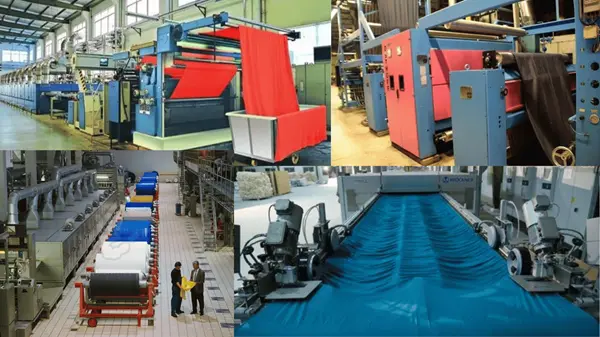Types of Textile Finishing Processes in the Textile Manufacturing Industry
The finishing process in textiles is the final stage. We basically describe it for the finalization of materials. There are different stages in finishing of textile. Such an example is, that yarn or thread is the final product for the textile yarn manufacturing process. And like that knit fabric or woven fabric is the final product of fabric manufacturing. So while finalizing the product, we use some special step to make sure it is okay and ready for next operation. So finishing is an important part of textile manufacturing. In this article, we discuss the Types of Textile Finishing Processes in the Textile Manufacturing Industry.

Objectives of Textile Finishing in Textile Industry
- Improve the attractiveness and repair ability of textile material.
- It accestiate or inhabit some natural characteristics on textile materials, (such as softening, stiffing, de-lusture , etc)
- Finishes impact new characteristics/properties to the textile materials (such as permanent press, flame retardant)
- It increase life and sturdiness of the textile material.
- It set the material, so it maintains its form and structure.
Types of Textile Finishing Processes in the Textile Manufacturing Industry
There are two forms of finishing textile materials.
- Mechanical Finishing
- Chemical Finishing
1. Mechanical Finish
Mechanical finishing is used for dimensional stability and measurement issue. We also do mechanical finish for out looking of textile material. Such mechanical finish are as follows. Calendaring, Off guard and sueding, Sanforizing, Brushing, Shearing are the most use mechanical finishing.
2. Chemical Finish
Chemical finishing is used for protecting textile. This is the final stage process for the end using textile materials. We use it to create shiny protection and to enhance performance or serviceability. There are different types of chemical finishes in the world. Hymenopter creasing, Softening, Stiffing, Soil unharness, Anti-static, Rot-proofing, Anti-bacterial, organic compound finishes, etc. are the most use textile finishes.
Conclusion
The Textile Finishing process is the final process but carries very high importance. It improves appearances like enhanced luster, color, and texture; Enhanced performance like Water repellency, flame resistance, and wrinkle resistance; and Increased comfort like Softness, breathability, and moisture management.
